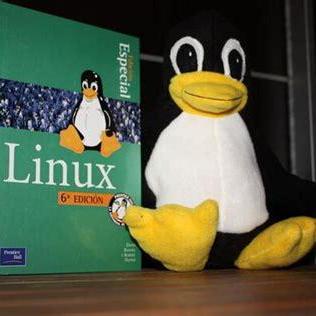I’m having problems with Manjaro again, always after those big updates. Anyway, I’m moving from Manjaro since it seems it will not work (authorization isn’t working properly). I already tried Ubuntu before (used it for 3 months), but moved on since file management in Ubuntu is pretty bad (had to use terminal to copy files and format drives because system wouldn’t recognize me as administrator). I’ve been using Manjaro for 4 months and it’s really good, the update problems ruin it.
Anyway, I was thinking of moving on to something like Linux Mint, Debian or Fedora. I wanted something with support and with people that care for the code. What do you guys suggest? I ask because I don’t want to encounter another distro changing problem with my next distro.
“Distro recommendation” questions aren’t usually very useful…all you get is everyone recommending the distro they use. It’s unlikely you can get anything useful out of the answers.
I wanted something with support and with people that care for the code
Applies to pretty much every major linux distro that isn’t a derivative and also some of the derivatives that do more than just add some cosmetics (unless you specifiy a bit more in details what you mean with “care for the code”).
Also all distros can be configured, there is no real reason to switch from something like ubuntu because you don’t like how the “Files” manager works to another distro…you could get pretty much the same on ubuntu as other distros offer and in most cases easier than by doing a reinstall. Really, you are better off trying to fix an issue you have on one distro that distro hop at every little problem you run into…
@hanabatake’s comment here could be an exception to this rule of unhelpfulness(?)
I’ve been very happy on Zorin OS 16, it’s basically just Ubuntu with lots and lots and lots of spit and polish (much like Mint, but with a better aesthetic imo).
This is my most used distro. It may be a “boring” choice for some but it honestly just works and has great design.
I second this; Zorin is amazing
IMHO - Fedora is the new Ubuntu from a usage standpoint. It “just works”, is rock solid and has up to date packages, kernel and window manager. The kernel is important too because cutting edge hardware wouldn’t work without a compile.
I agree and am a Fedora user. Its funny though as several years back, people used to say, “Ubuntu is the new Fedora”.
Debian all the things.
My advice, Go vanilla Arch. Alot of Manjaro’s issues are actually tied up in the fact that it recommends you use PAMAC to install things. PAMAC, though user friendly, also seems to cause a lot of system stability issues when installing packages, vs just using pacman. I’ve also heard that, even though Manjaro is a rolling release, it keeps certain things back that are released on vanilla Arch branch more quickly. I don’t know this for cirtain but I’ve heard it some where I think.
Install vanilla arch via the archinstall command, then get an AUR helper like ‘yay’. In my experience it’s more stable and just plain better.
If you do decide to go with an Ubuntu based Distro, Give POPos a try
If you want focus in your work and not in your distro features just use Debian.
I think you must be doing something strange that you are having upgrade problems no one else has. I have been running Manjaro for 4 years now with minimal update issues.
Are you by any chance installing a lot of obscure software via AUR?
Same situation here, Manjaro for 4 years or so without issues. A couple of times the repo keys gave problems, but I always found the solution online quickly.
Avoid AUR as much as possible, and the system is quite stable, in my experience.
People complain about system problems after updating on the Manjaro forums. I don’t think I’m the only one having these problems.
I installed some things on AUR, but I don’t think I went too obscure. The most obscure things I downloaded were Debtap and text to speech programs. I also installed some bash programs.
I’ve been using Manjaro for a while now and haven’t had problems. 🤔
deleted by creator
Id say stick to arch-based and try out EndeavourOS. IMO thats the one that should be pushed instead of manjaro even though i get why that is not the case. Also isnt your ubuntu problem just the file manager? As in its dolphin (or whatever the default is) doing that and not ubuntu as a whole. So you could go ubuntu and just get a different file manager
I would strongly suggest you to try MX-Linux. I too was in a similar situation as yours 9 months ago and now I use MX xfce and I haven’t encountered one bug like I used to do on Ubuntu based distros
I would go with Fedora. For most desktop needs Debian can be a little out of date, and I don’t think you want to go through all of the hard work of converting to sid. Linux mint is also just Ubuntu with a green coat of paint and snaps removed. Fedora is easy to set up, stable, and has all of the newer software. Fedora, being backed by RedHat has a lot of support and all bugs are fixed within a timely manner. I would highly recommend it.
I absolutely agree with this and like to add the following. The ‘updates’ argument is spot on and there are in my opinion only two ways to do updating that are viable:
- Rolling releases that update as soon as upstream pushes an update (that’s basically what Arch Linux, openSUSE Tumbleweed, and Void Linux are doing)
- Backporting security patches, this is a lot of effort and as far as I know only SUSE, Red Hat, Canonical, and the Debian community are doing this reliably.
Anyone else who claims to have a ‘stable release’ very likely doesn’t do either of these or ship something the aforementioned are shipping (maybe repackaged, themed and (in Manjaro’s and Mint’s case e.g.) held back for a while for no apparent reason.) My advice for beginners would therefore be: Pick a distro that provides with a release cycle that you like: 1. very slow, only security patches in between releases: e.g. Debian, openSUSE Leap 2. frequent releases, very close to upstream release cycle: e.g. Fedora 3. rolling release: openSUSE Tumbleweed, Arch Linux (the latter has a rather steep learning curve).
Stick to the aforementioned upstream distros for the following reasons: 1. Security 2. Ease of getting help (huge communities, good wikis/manuals, close to upstream) 3. Longevity (as we’ve seen, these one-man-distros like Antergos or SwagArch, … can and will disappear at any time) 4. You will be actually more helpful to the Linux community (you can and should file bug reports to the packagers, if you find a bug in a ‘distro’ that neither has own packages nor a bug tracker if you find a bug your only hope is that it will be fixed upstream, if it exists there at all).
Most ‘downstream distros’ are nothing but a ‘themed install’ with ‘preinstalled codecs’ Debian/Fedora/openSUSE do not provide ootb for legal/ideological reasons. Most of the time you can replicate their look and feel by installing a new theme and changing the wallpaper and a few settings. My adive: Go for vanilla openSUSE/Fedora/Debian/Arch and change those things yourself. It’s a good way to learn stuff that is not too hard to learn and you will have a more reliable system, too.
source: u/xaverh on https://libredd.it/r/FindMeADistro/comments/cyn0hw/why_you_shouldnt_use_manjaro/
I also agree with @Aiwendil@lemmy.ml, you shouldn’t distro hop and try to fix your issues
you shouldn’t
ditrodistro hop
(otherwise great, thanks)fixed, thanks :)
Would you mind telling a few things about your computer usage?
- Do you play lots of games or do graphics work?
- Are you a programmer or just like to make bigger tweaks to your system?
- Do you prefer having the latest features or would you rather have your applications work the same for >1 year?
- Preferred desktop environment?
- Enjoy working with the terminal or prefer a GUI?
- Are those 3+4 months your total Linux experience?
I don’t play a lot of games. I dual boot with windows to run windows exclusive software and Elder Scrolls Online
I’m still learning programming and I don’t make big tweaks to the system. I avoid Windows because it’s proprietary and invasive.
I would rather have things working. I downgrade many software I use.
I only saw XFCE in videos. Ubuntu is Gnome, right? I prefer KDE.
I prefer a GUI for some and a terminal for others. CLI programs are good and simpler to run on a terminal, but doing stuff that require lots of arguments can get messy and mess things up too.
Yes.
Use EndeavourOS, which’s pure Arch Linux so you won’t ever have problems with updates, it’s easy to install. I am running the same installation for years now without issues. Can only recommend!
Arch linux has the new
archinstallscript which should make it a lot easier to install if you want to stay arch-basedI’ll compare the 3 you listed, but disclaimer that I’m no expert.
- Linux Mint: Ubuntu based, and will be very similar to Ubuntu, but with a different DE, software shop, default apps, themes, etc. Cinnamon uses less RAM than Ubuntu’s Gnome.
- Debian: Ubuntu’s base. Debian stable is very “stable”. Imo, though, this is not great for desktop. You’ll be dealing with years old software. You can use debian testing. It’s similar to Ubuntu and Mint. Ubuntu has more stuff added (pre-installed software) and PPAs, etc. I personally prefer the other two options to Debian.
- Fedora: short term release cycle, so you’ll get packages with recent versions, but it is still stable. You’ll be supported by Red Hat. Fedora is pretty solid.
I personally like Fedora the most on your list. If you want the least maintenance / manual work distro, Linux Mint is best on your list.
However, I’d advise you to try vanilla Arch or EndeavourOS. You like Manjaro but don’t like the big updates breaking it. Vanilla Arch will not have those problems. EndeavourOS is very similar to vanilla Arch, but with a nice installer.
But Arch is probably a bit more maintenance than the options you have listed.












